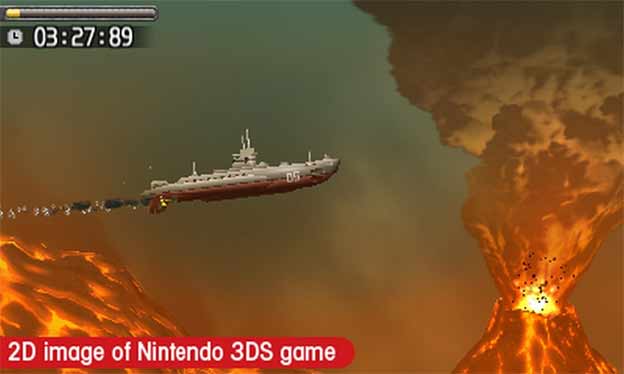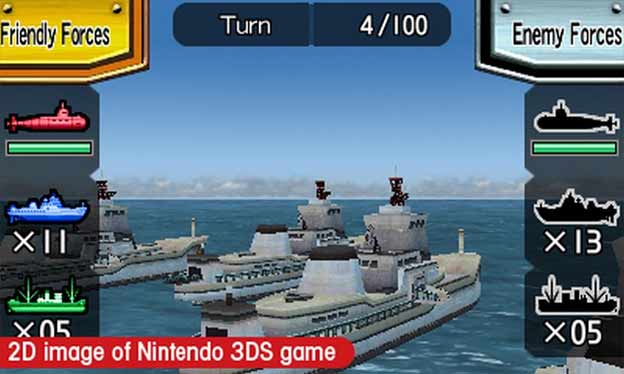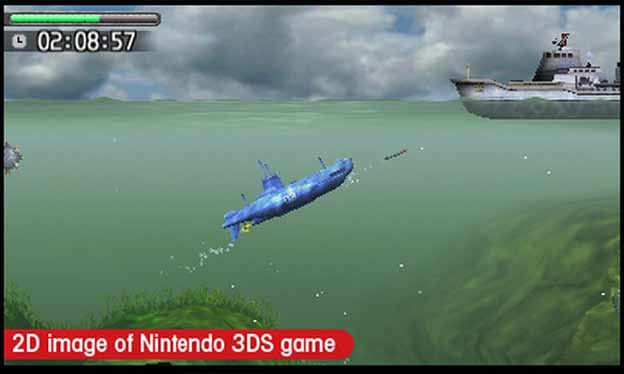Down Periscope
In the middle of May 1941, the German battleship Bismarck began terrorizing the North Atlantic. On its maiden voyage, the Nazi warship sunk the pride of the British Royal Fleet, the HMS Hood, in an eight-minute battle—The body count was around 1,400, with only three survivors. Prime Minister Winston Churchill knew the Bismarck posed a grave threat to Allied operations in the area, and immediately made the battleship the number one target of Royal Navy. “I don’t care how you do it,” Churchill said. “You must sink the Bismarck.” For the men onboard the Allied cruisers, destroyers, and submarines, it was a vital and grave charge, one that carried the heavy weight of one’s mortality, if not the larger consequence that was the potential of ongoing naval dominance in the North Atlantic.

While the Bismarck’s reign of terror was short lived, the naval vessels of Steel Diver can still make no such lofty claims of drama. As it stands, the game has a hard enough time with context. Set in the generic era of “19XX,” Steel Diver sets up the kind of paper-thin storyline expected of a shmup—a genre not far removed from what my initial impressions of the game actually were. But this is hardly In The Hunt, Irem’s old-school underwater shooter that Steel Diver bears a vague (if modernized) resemblance to in screenshots. It’s more of a submarine simulation, albeit one that dabbles in the streamlined style of arcade play.
To be fair, Steel Diver is a 3DS launch title, and you don’t really necessarily need a hefty reason to start blowing things up with a submarine. (The idea itself should be cool enough by its own merits, anyway. Who doesn’t want to take a submersible for an undersea adventure?) But for such a unique premise, Steel Diver’s ideas sadly just aren’t all the interesting in practice. For one, it’s not really a simulation. The goal of any given level is to get from point A to point B, taking out any enemies along way, balancing your way through underwater mine traps and other obstacles. The controls are similarly streamlined among the three types of seacraft available (a small, maneuverable sub with vertical and horizontal attacks, a mid-ranged, well-balanced model, and a slow, behemoth submersible that has a farther range of rotational pitch). Movement is adjusted through x and y axis dials situated on the touchscreen, torpedo supplies are endless, and you’ll never have to worry about anything like ballast or, say, hull pressure.

Herein lies one of the game’s significant problems: it’s clear that Steel Diver isn’t trying to be a true sub simulator, but it stubbornly doesn’t let you play it at the expectedly quicker pace of an action game, either. Instead it submerges in the limbo between the two, far flung from a real arcade experience despite its simplified combat, and with the slower pacing of a more realistic game. The result is that the game doesn’t feel fully comfortable in either camp. This is largely in part because Steel Diver has some glaring oversights that are bafflingly absent. The controls are probably the most noticeable here, and given that for intents and purposes the entire game is controlled by its touchscreen layout, you constantly feel disconnected to your sub. The reason Nintendo left out the option of a standard d-pad and face button scheme is likely because using the dials can in certain cases afford you greater precision, though the constant babysitting of each dial, (which stays at whatever rate, speed, or direction you’ve previously set until further manually adjustment is needed) can be a little trying at times, and lends the game some unnecessarily complication.

What’s even more bizarre is that your sub can’t turn around. Giving your craft a simple navigational ability like this could have resulted in another layer for strategy by accounting for flanking, not to mention the interesting way that might have allowed the developers to adapt 3D into your actual battle strategy. Instead, if you know what you’re doing, you can just breeze past most enemies, who, all facing the opposite direction, can’t follow you.

Similarly, there are certain points where enemy subs are positioned in the background, facing out and shooting torpedoes at you diagonally—this is probably the most gimmicky instance of 3D usage in the game, since these stationary foes feel like unmoving props in a sub-themed carnival ride. Not that 3D is particularly important in a would-be submarine sim. Still, out of all the nice effects in play (the rippling light effects bouncing off your steel craft in shallow water look particularly lush), Steel Diver’s 3D feels needlessly tacked on, aside from showing subtleties of depth in the screen. You may see something move from the foreground to the background every once in a while, though it has very little bearing on the actual gameplay—that’s about the extent of it.
Sadly, for every good idea that Steel Diver has, it seems to just miss the mark. First-person periscope combat between stages is a decent, if hobbled affair and other than diving below the surface, the 3D here doesn’t really add anything to the experience. (The game also forces you to either sit in a swivel chair or physically stand up and spin in a circle—a concession to would-be realism that’s a little too unorthodox—to fully utilize the periscope’s 360-degree range of movement.) Considering the countless number of iOS games that use gyroscope rotation to auto-rotate by simply tilting the device to the left or right, not at least including an option for this kind of control is puzzling.
Interesting mechanics like enemy depth charges and undersea environmental hazards are used sparingly, and given the controls handling these situations can feel a little clunky. The developers tried to make up for the game’s short campaign by including power-up decals to stick on your sub and a couple of extra modes—a slightly bolstered version of periscope hunting and Steel Diver’s take on Battleship, which admittedly has an interesting 3D torpedo dodging mechanic that’s too underused. (Seriously, where was that in the actual campaign?) I really wanted to like Steel Diver more, but unless you particularly enjoy visually measuring the distance between your foregrounded sub and the underwater horizon line, this is a rental at best.
RATING OUT OF 5 RATING DESCRIPTION 3.8 Graphics
Steel Diver may not look like it uses much more horsepower than a DS, but there’s some lush, colorful visuals and subtle effects here. 2.5 Control
Limiting sub control to the touchscreen makes navigation and combat feel oddly disconnected. 2.0 Music / Sound FX / Voice Acting
The underwater and submarine sounds are great, but the repetitive voice acting is tepid and music is forgettable. 2.5 Play Value
Weirdly contradictory design and somewhat awkward controls make Steel Diver undecided on whether it’s an action game or simulation. The result is that it’s neither. 2.5 Overall Rating – Average
Not an average. See Rating legend below for a final score breakdown.
| Review Rating Legend | |||
|---|---|---|---|
| 0.1 – 1.9 = Avoid | 2.5 – 2.9 = Average | 3.5 – 3.9 = Good | 4.5 – 4.9 = Must Buy |
| 2.0 – 2.4 = Poor | 3.0 – 3.4 = Fair | 4.0 – 4.4 = Great | 5.0 = The Best |
Game Features:
